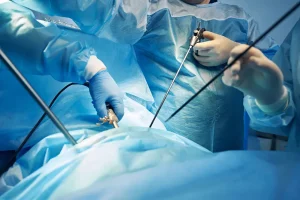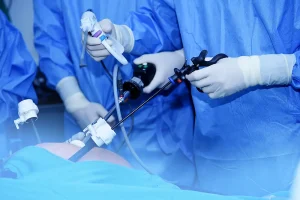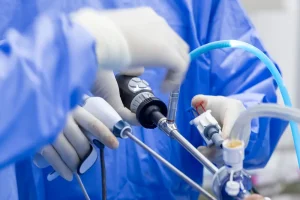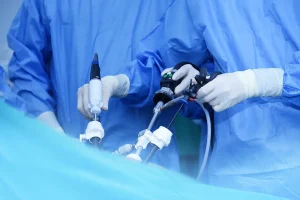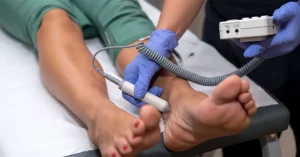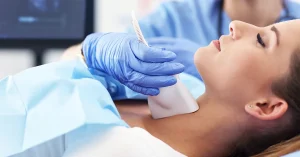Inguinal furunculosis is a particularly unpleasant condition that predominantly affects women, though men can also develop this disease. Boils in the intimate area can appear at any age, explains Dr. Oleg Cebotari.
The condition significantly affects patient well-being and, if left untreated, may progress to a major purulent infection in the intimate region. Early consultation and proper management are essential to prevent complications.
How Does Inguinal Furunculosis Manifest Itself? What Are the Symptoms of Inguinal Furunculosis?
In the early stages, boils in the intimate area cause mild discomfort. As the condition progresses, inflammation occurs, accompanied by pain and an unpleasant odor. The inflammation forms abscesses, which are pockets of pus, and the pustules swell and redden, increasing discomfort. In severe cases, inguinal furunculosis can impair intimate relationships, making sexual activity painful.
Abscesses may rupture spontaneously; however, this does not indicate healing. When pustules burst or are squeezed, the surrounding tissue becomes exposed to infection, leading to the formation of new boils. Persistent pain and potential scarring may occur if proper treatment is not applied. Without adequate management, boils can recur and multiply.
Why Do We Get Genital Furunculosis? What Are the Causes of Boils in the Intimate Area?
Genital furunculosis commonly affects individuals with diabetes or obesity. Dermatitis and other conditions, including folliculitis, hyperhidrosis, and hidradenitis suppurativa, also contribute to the development of inguinal boils.
Infections caused by Staphylococcus aureus can spread within families through shared items such as towels and bed linen. Understanding these causes is crucial for effective prevention and treatment.
What Directly Contributes to the Appearance of Inguinal Boils?
Several factors create favorable conditions for inguinal furunculosis:
- Poor intimate hygiene;
- Shaving the intimate area with a razor;
- Wearing tight underwear made of synthetic materials, which increases sweating and prevents the intimate area from breathing.
These factors promote bacterial growth, making the area susceptible to infection. Proper hygiene and clothing choices are essential to reduce risk.
Who Can Treat Genital Furunculosis?
Dermatologists primarily provide treatment for boils in the intimate area. In severe cases, surgeons may be involved due to large or deep boils that require surgical intervention. Early evaluation by a specialist ensures appropriate treatment and prevents complications.
How Is Inguinal Furunculosis Treated? How Can We Get Rid of Boils in the Intimate Area for Good?
Treatment begins with a thorough medical examination to determine the cause and nature of the boils. Bacteriological tests and blood sugar assessments may be performed. If the condition is mild and not advanced, antibiotics tailored to the patient, along with topical creams and solutions, may be effective.
Advanced cases require surgical intervention, which involves incision and drainage of the boil to fully eliminate infection, explains Dr. Oleg Cebotari. Proper follow-up is essential to prevent recurrence and promote complete healing.
How Can We Prevent Inguinal Furunculosis?
Prevention measures include:
- Maintaining proper intimate hygiene;
- Using antiseptic soaps and gels;
- Using personal towels and bed linen;
- Wearing loose-fitting, cotton underwear;
- Avoiding tight or synthetic pants
- Quitting smoking;
- Maintaining an optimal body weight;
- Adopting a healthy lifestyle;
- Using laser or IPL hair removal instead of shaving.
Once inguinal furunculosis develops, it is important to consult a specialist immediately. Antibiotics should only be taken under medical supervision, and boils should never be squeezed, as this worsens the condition.
Surgeon Dr. Oleg Cebotari treats patients at the VenArt Clinic in Cluj-Napoca, on Rene Descartes Street, number 27. Appointments can be scheduled via email at office@clinica-vasculara.ro You can also call at 0364.140.261, or WhatsApp at 0731.837.520.
The VenArt Clinic has been providing high-quality specialized medical services since 2013, with over 20 specialized and subspecialized doctors. Inguinal furunculosis can be effectively treated with proper guidance, restoring patient comfort and health. Schedule a consultation and see how we can help.


